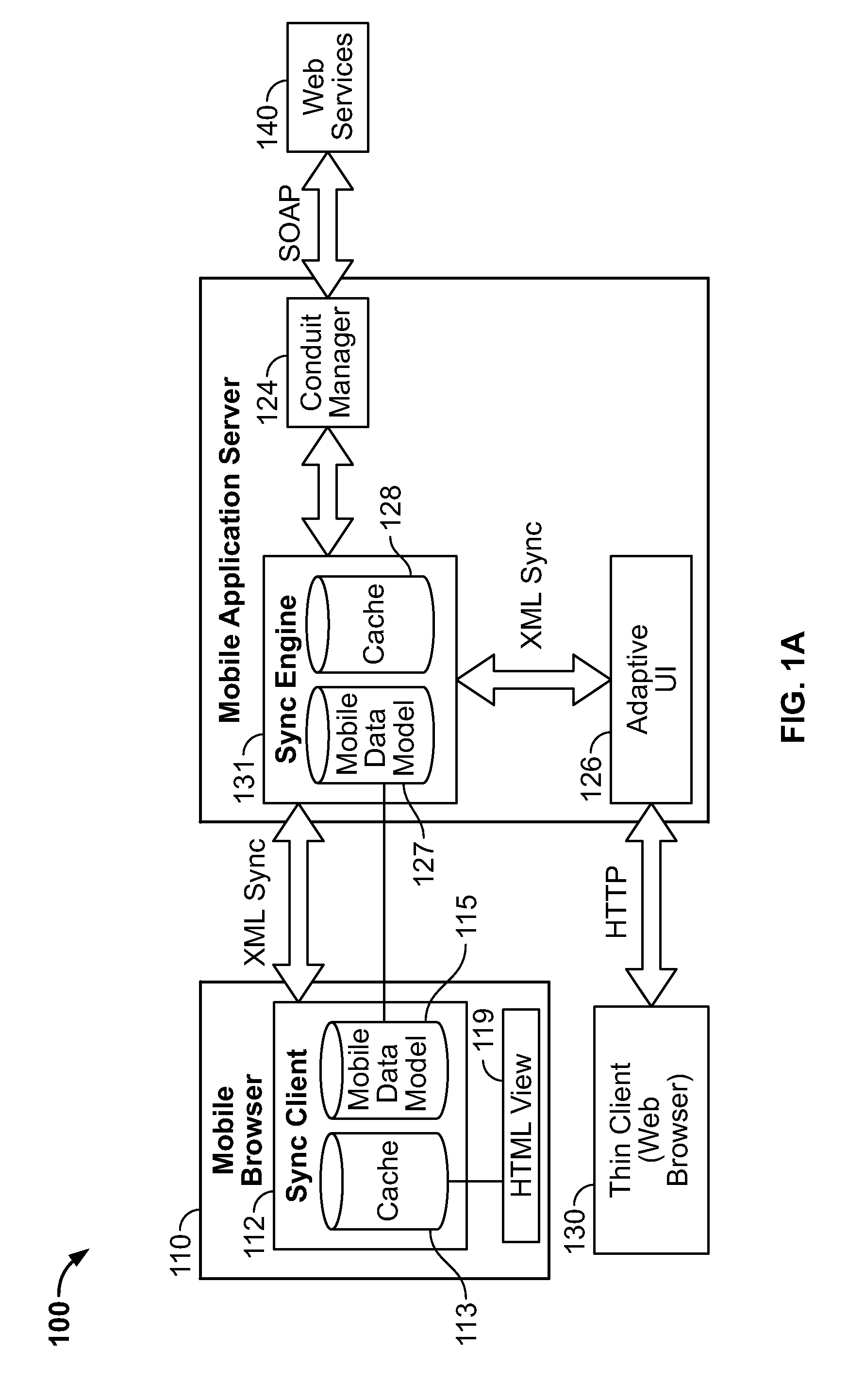Mobile applications
a mobile application and architecture technology, applied in the field of mobile application architectures, can solve the problems of not easy to get connections wherever a user is, still a limit to what a device can store and process locally, and more troubl
- Summary
- Abstract
- Description
- Claims
- Application Information
AI Technical Summary
Benefits of technology
Problems solved by technology
Method used
Image
Examples
example 1
[0071]Example 1
They can be called using the same syntax as regular XScript functions:
[0072]$pageFlow.actionName([param1(,param2])
[0073]A controller file can minimally include a begin action which is called when an application is run. Minimally, the begin function can return a forward array that contains the filename of the first template to be displayed.
function begin( ){ return [“home.tmpl”, $root->accounts];}
[0074]Actions need not directly modify the $current variable, but if a second object is returned in the forward array, $current can be set to reference that object.
[0075]Functions, actions, and template expressions can share temporary variables using $context.
[0076]Actions can return a forward array. A forward array can be an array of up to 2 XScript objects. In one embodiment, the first object specifies the next template to display and the second object, if present, is a pointer to the data which is used to set $current:
function actionName( ) {return [forward-objectl, forwar...
example
[0939
The following label definition constructs a string from the contact's first and last name.
$node.first + “” + $node.last
[0940]This is equivalent to the following expression.
[0941]first+“”+last
[0942]Label definitions may also contain XScript functions and operators.
[0943]($node.first)+($node.first.length( )>0 ? ““:””)+$node.last
[0944]Anatomy of an Application Data Model Definition
[0945]The following XML Schema describes a simple application data model defining account and contact nodetypes:
mas:type=“pkey” / > mas:type=“pkey” / > maxOccurs=“unbounded” / > maxOccurs=“unbounded” / > mas:alias=“account” mas:inverseAlias=“contacts”>
[0946]The schema file can consist of three parts: nodetypes (complex type definitions), a graph definition, which defines the structure of the cache “document” and a set of key / keyref definitions, which are relative to the graph (i.e., document) structure.
[0947]The data m...
examples
[0974
[0975]The following XML represents an instance of an account node:
Acme 1.2 1.3 ABC-1234 XYZ-4321
[0976]The key definitions for account nodes is as follows:
[0977]This allows for the following navigation syntax:
[0978]var accounts=$root.@@accounts.*;
[0979]The “product” alias is defined as follows:
mas:alias=“product”> xpath=“account / purchaseOrders / purchaseOrder / lineItem” / >
[0980]The following expression traverses to the product referenced by the first line item of the first purchase order.
[0981]var product=account.purchaseOrders.*[0].lineItems.*[0].@@product;
[0982]The “owner” alias is defined as follows:
mas:alias=“owner”>
[0983]The following expression traverses to the user node referenced by the keyref described by the “owner” alias.
[0984]var user=account.@@owner;
[0985]The “events” alias is defined as follows:
mas:alias=“events”>
[0986]The following expression traverses to all event nodes referenced by the keyref described by the “events” alias.
[0987]var events=a...
PUM
 Login to View More
Login to View More Abstract
Description
Claims
Application Information
 Login to View More
Login to View More - R&D
- Intellectual Property
- Life Sciences
- Materials
- Tech Scout
- Unparalleled Data Quality
- Higher Quality Content
- 60% Fewer Hallucinations
Browse by: Latest US Patents, China's latest patents, Technical Efficacy Thesaurus, Application Domain, Technology Topic, Popular Technical Reports.
© 2025 PatSnap. All rights reserved.Legal|Privacy policy|Modern Slavery Act Transparency Statement|Sitemap|About US| Contact US: help@patsnap.com



